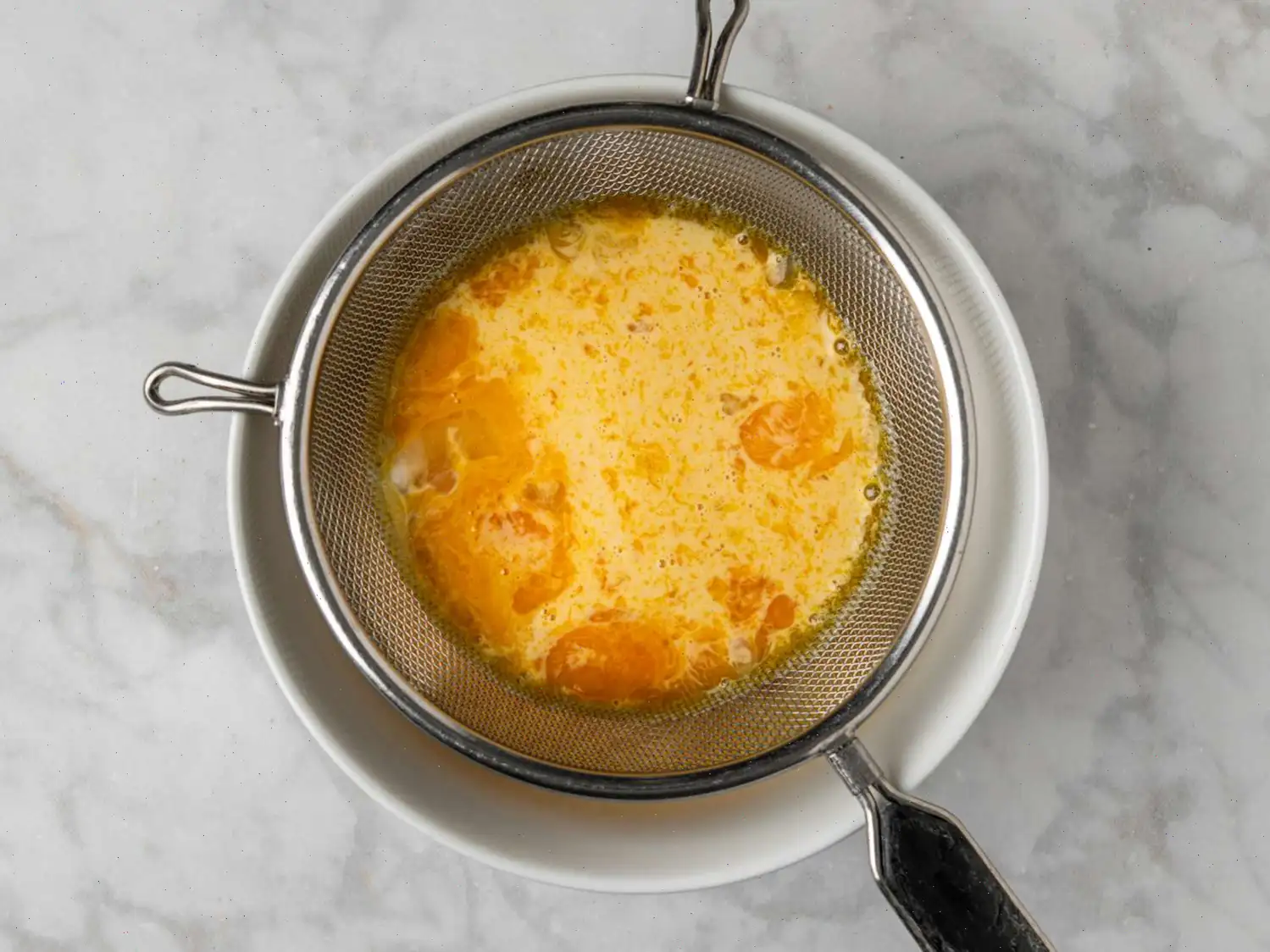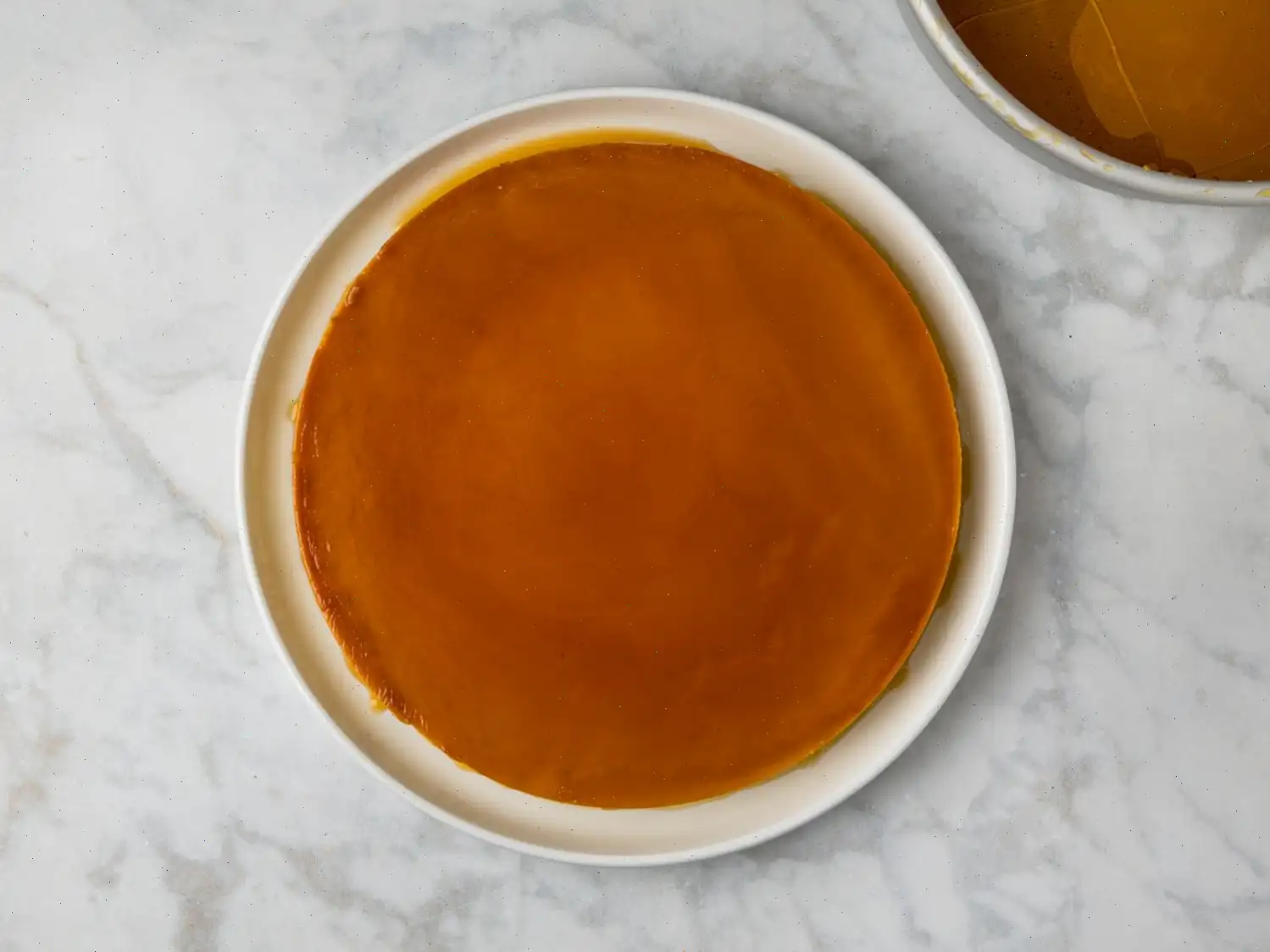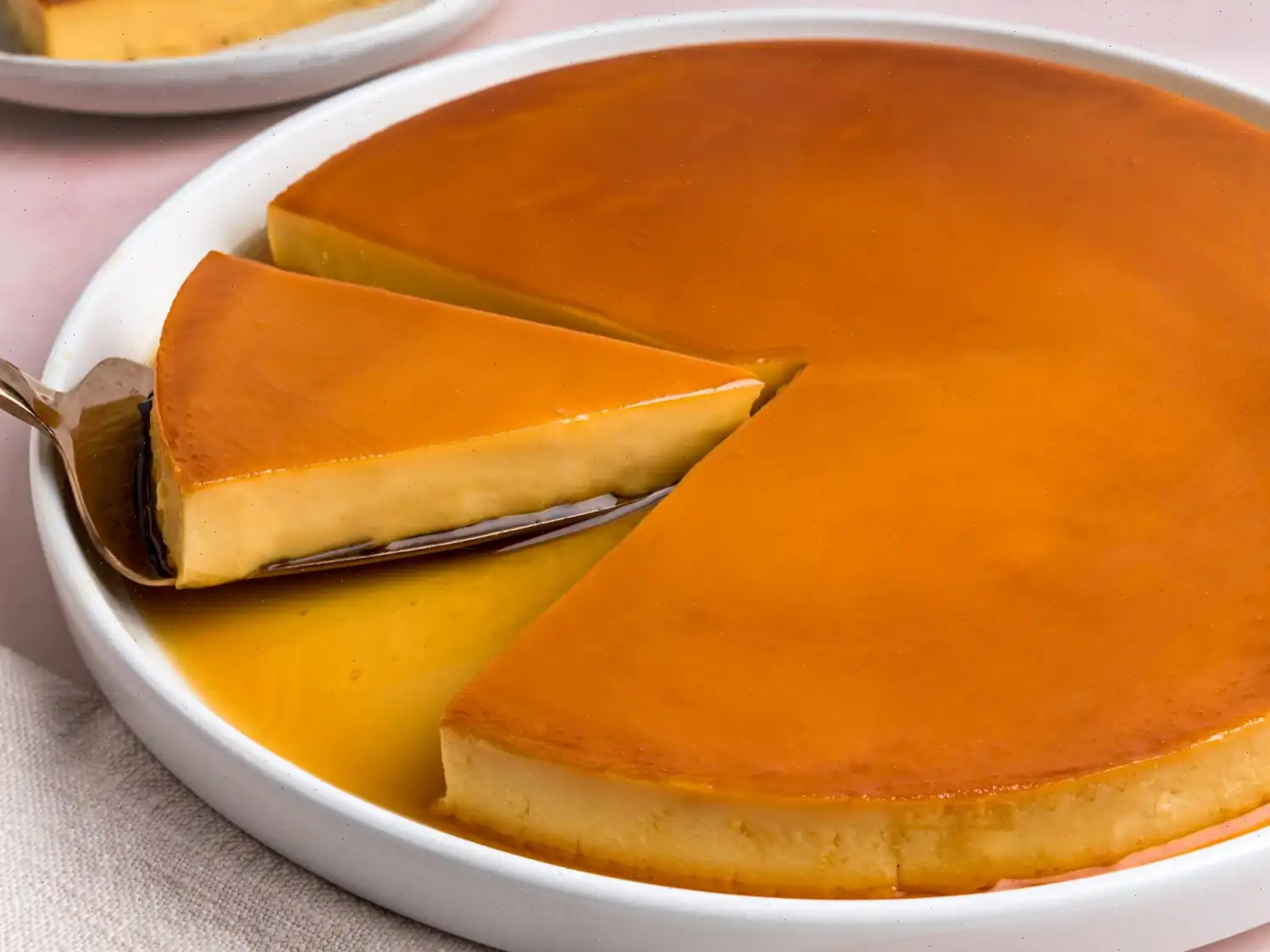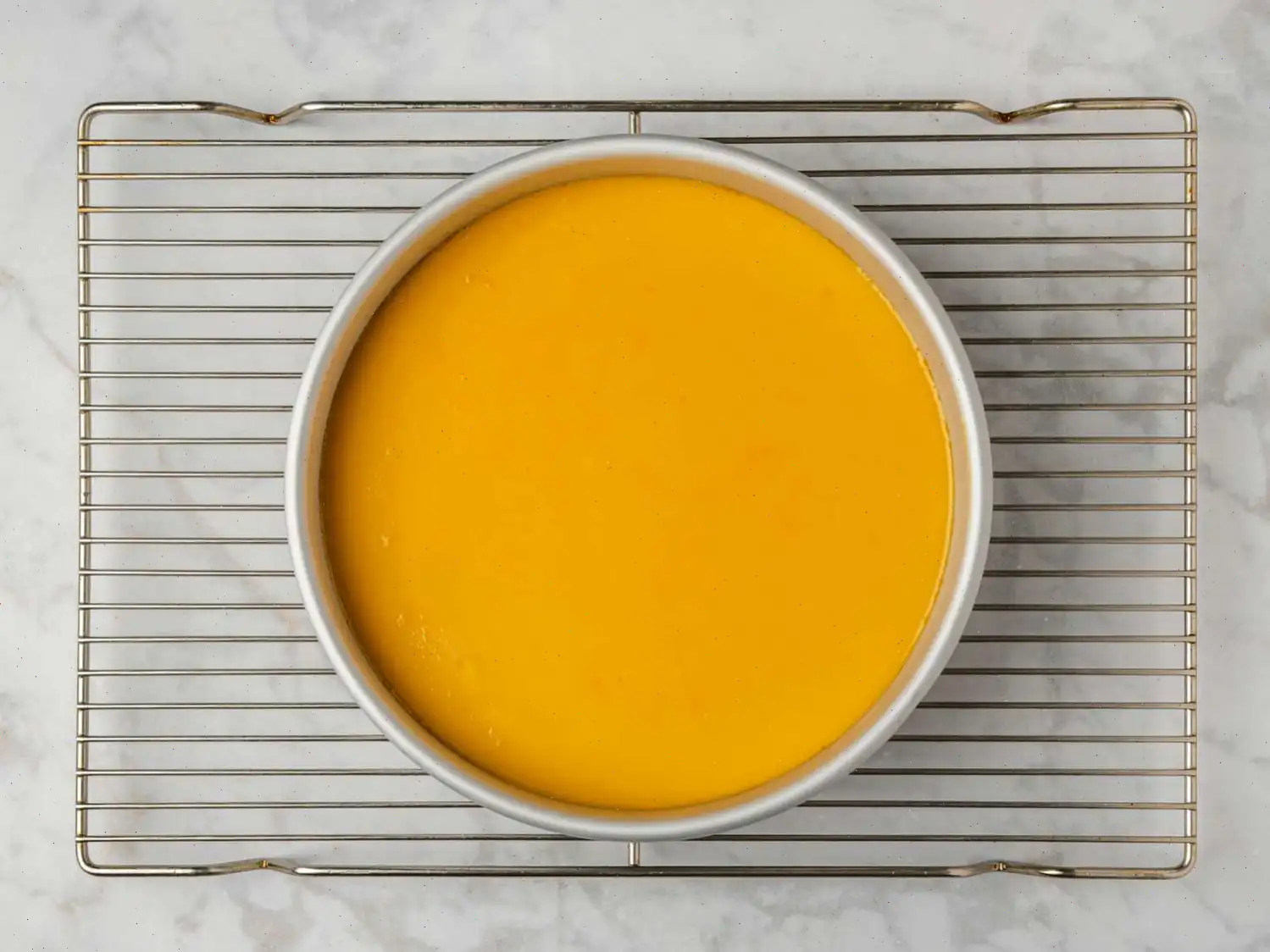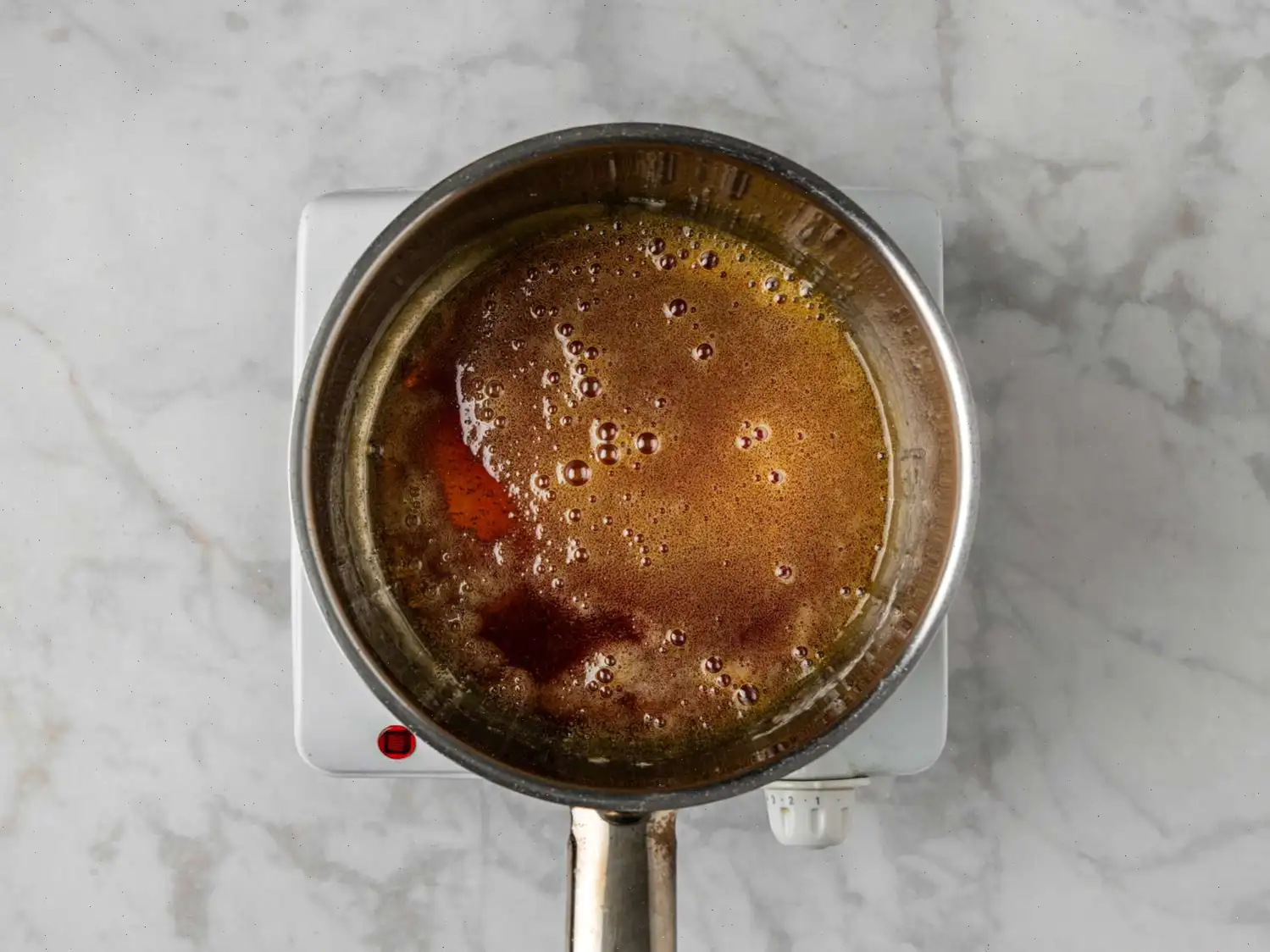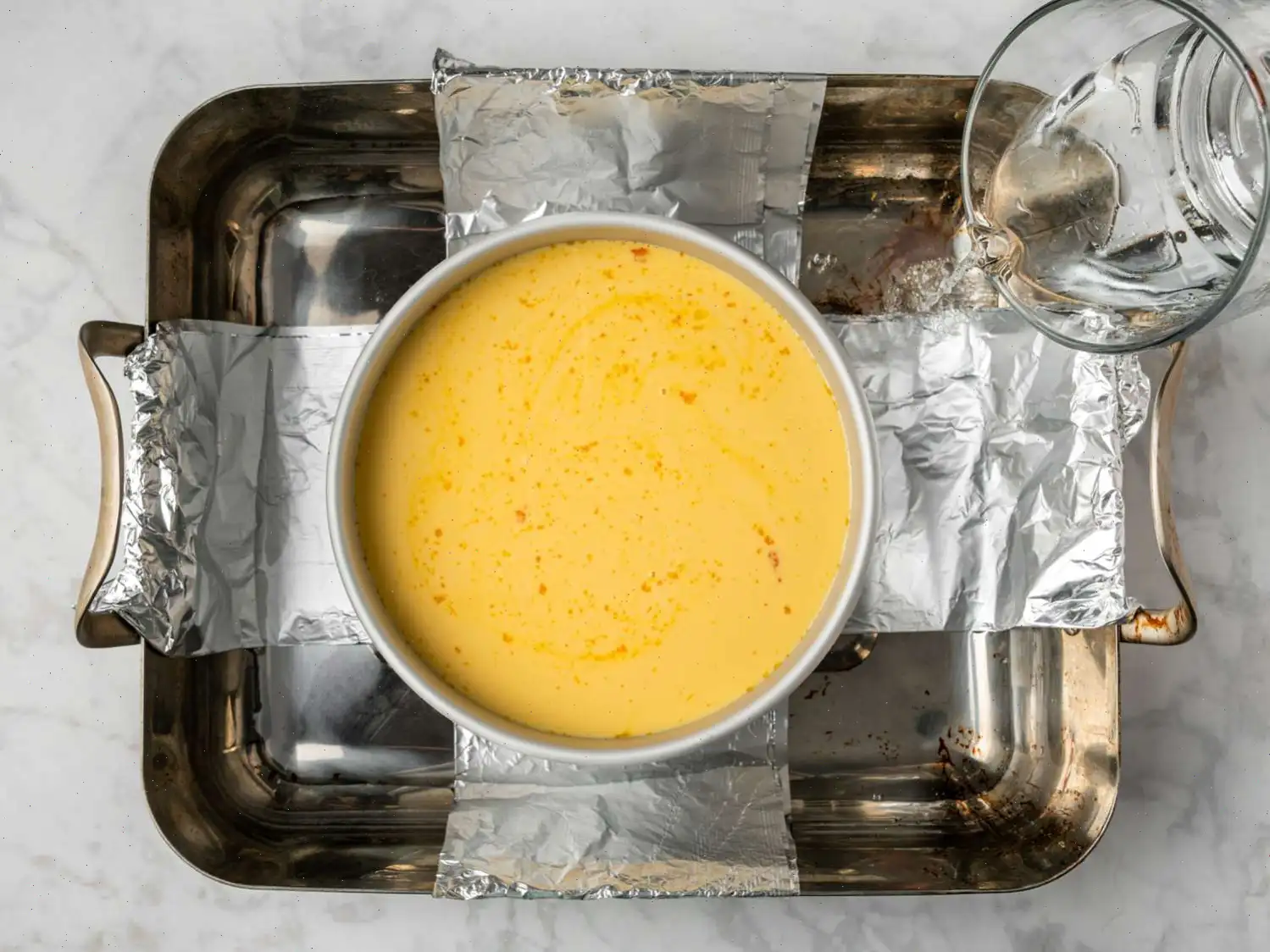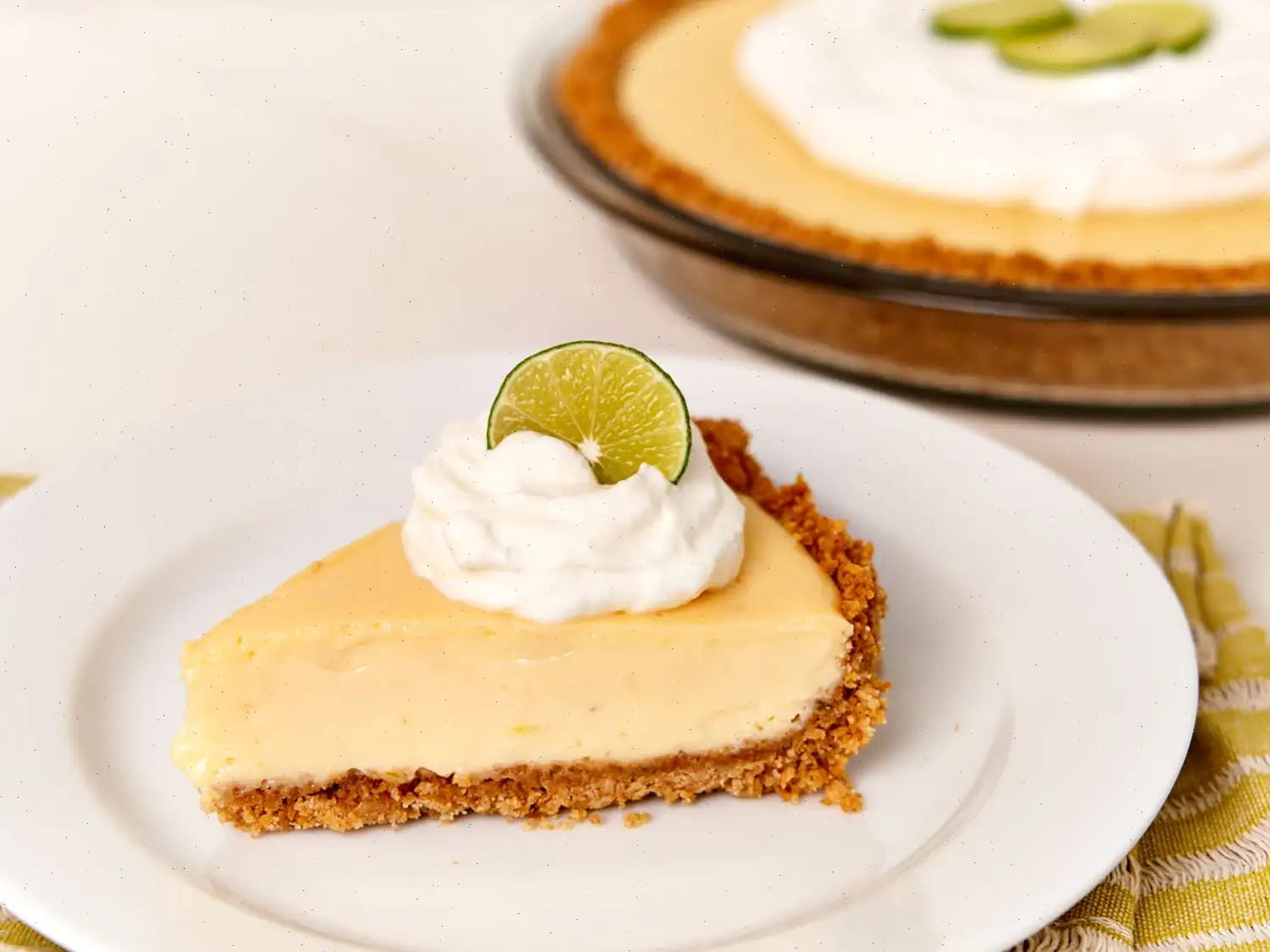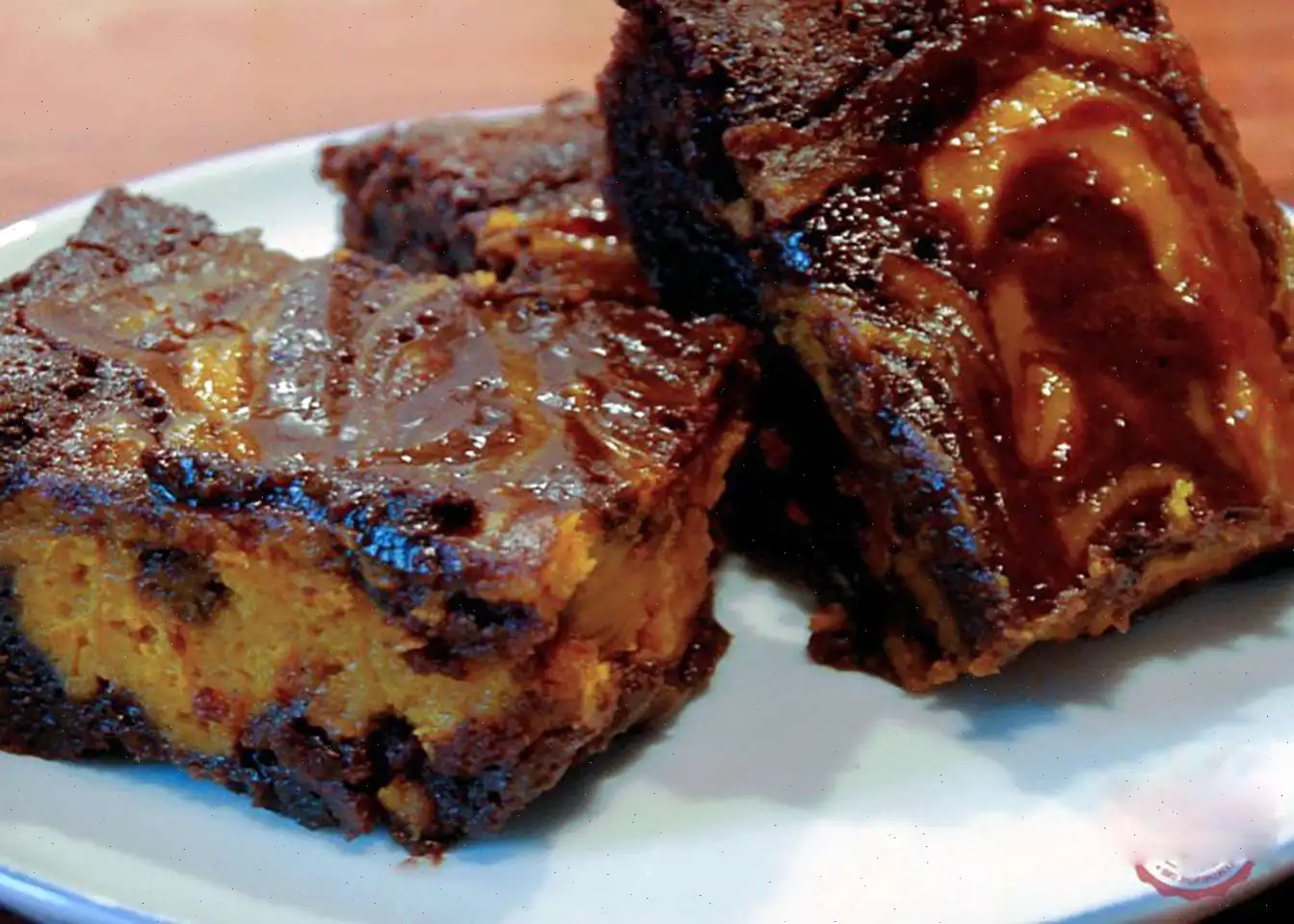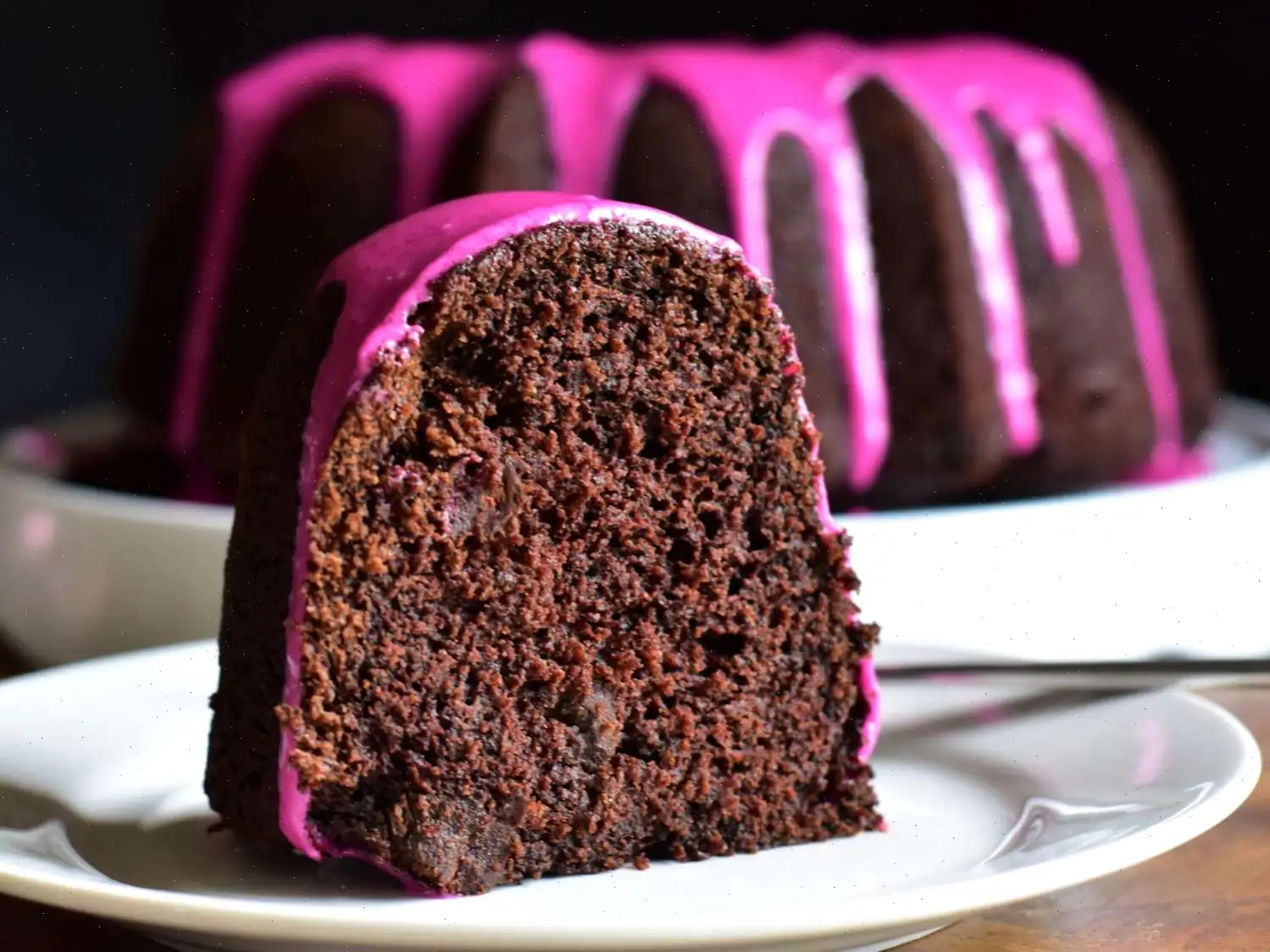
Leche Flan Recipe
Ingredients
This recipe was developed at its original yield. Ingredient amounts are automatically adjusted, but cooking times and steps remain unchanged. Note that not all recipes scale perfectly.
Original recipe (1X) yields 12 servings
- Caramel:
- 1 cup sugar
- cup water
- Custard:
- 1 (14 ounce) can sweetened condensed milk
- 1 (12 ounce) can evaporated milk
- 12 egg yolks
- 1 tablespoon vanilla extract
Directions
Step 1: Gather all ingredients.
Step 2: Preheat the oven to 375F (190C).
Step 3: In a medium saucepan, combine sugar and water. Heat over medium-high heat, bringing the mixture to a boil. Do not stir to prevent crystallization. Let it boil, swirling the pan occasionally, for 7 to 10 minutes until the sugar syrup begins to brown.
Step 4: Reduce the heat to medium-low and watch the syrup turn a deep brown. Once it does, about 2 to 3 minutes, immediately pour it into a 10-inch flan mold. Tilt the mold carefully to coat the entire bottom surface with caramel.
Step 5: In a large bowl, combine evaporated milk, sweetened condensed milk, egg yolks, and vanilla extract. Stir gently to avoid bubbles, then strain the mixture to ensure smooth custard.
Step 6: Prepare a roasting pan large enough to hold the flan mold. Fold two 32-inch long sheets of aluminum foil lengthwise into quarters to create strips. Cross the strips and place the flan mold in the roasting pan, letting the foil strips extend over the edges of the pan. Crimp the ends of the foil slightly to hold them in place.
Step 7: Slowly pour the custard mixture into the caramel-lined flan mold.
Step 8: Add enough hot water to the roasting pan to come halfway up the sides of the flan mold. Cover the roasting pan with aluminum foil.
Step 9: Bake the flan in the preheated oven for about 1 hour, or until the custard is firm and a knife inserted near the center comes out clean.
Step 10: Remove the roasting pan from the oven and carefully lift the flan mold out using the foil strips. Let it cool on a wire rack for about 1 hour.
Step 11: Cover the flan and refrigerate until completely cool, at least 4 hours or overnight.
Step 12: Run a paring knife around the edges of the flan to loosen it. Place a rimmed platter over the mold and flip it carefully to release the flan onto the platter.
Step 13: Scrape any excess caramel from the mold and pour it over the flan before serving.
Cooks Note: The more caramel you pour into the mold, the sweeter the leche flan will be.
Nutrition Facts (per serving)
12 servings per recipe
| Calories | Fat | Carbs | Protein | Cholesterol | Sodium |
|---|---|---|---|---|---|
| 387 kcal | 14g | 55g | 11g | 336mg | 119mg |
Nutrition Breakdown
- Total Fat: 14g (18% Daily Value)
- Saturated Fat: 7g (35% Daily Value)
- Cholesterol: 336mg (112% Daily Value)
- Sodium: 119mg (5% Daily Value)
- Total Carbohydrates: 55g (20% Daily Value)
- Total Sugars: 55g
- Protein: 11g (21% Daily Value)
- Vitamin C: 2mg (2% Daily Value)
- Calcium: 281mg (22% Daily Value)
- Iron: 1mg (5% Daily Value)
- Potassium: 337mg (7% Daily Value)
* Percent Daily Values are based on a 2,000 calorie diet. Your daily values may be higher or lower depending on your calorie needs.
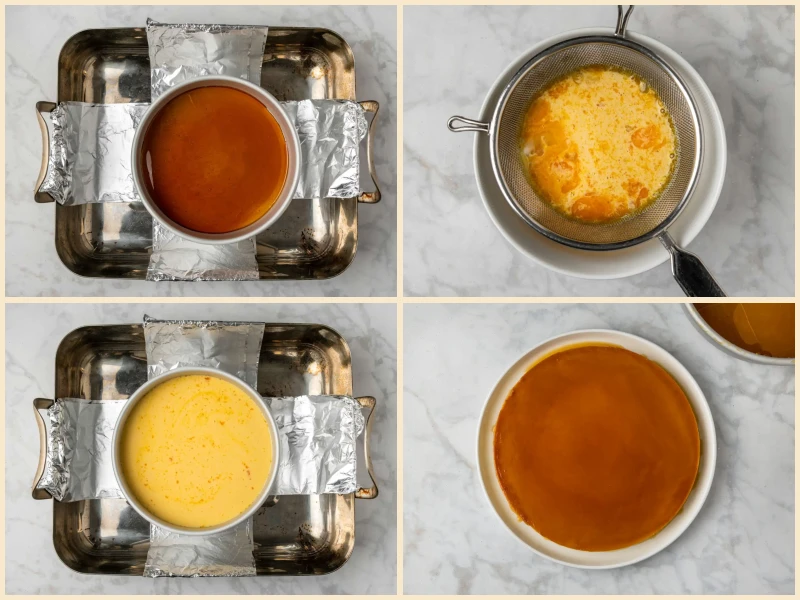

History and Origin
Leche Flan, a rich and velvety custard dessert, has its origins in the Philippines. The name "Leche Flan" is derived from the Spanish word "leche," meaning milk, and "flan," which refers to a type of custard. The dessert was introduced to the Philippines during Spanish colonization in the 16th century, where it became a staple in Filipino homes and festive occasions. Traditionally, it is made with egg yolks, sweetened condensed milk, and evaporated milk, with a caramelized sugar base.
Regional Variations
Though Leche Flan is popular all over the Philippines, there are regional variations in its preparation. In some regions, the flan is made with coconut milk (instead of evaporated milk) to add a unique flavor. Certain provinces may also use different forms of sweeteners such as muscovado sugar, giving the custard a richer taste and darker color. In urban areas, it's often enjoyed with a layer of leche flan served alongside halo-halo, a popular Filipino shaved ice dessert.
Differences from Similar Desserts
Leche Flan is often compared to the Spanish flan, but it differs in texture and taste. The Filipino version is denser and creamier, thanks to the high proportion of egg yolks and the addition of sweetened condensed milk. In contrast, Spanish flan tends to be lighter, with a smoother consistency and a slightly more delicate flavor. Another Filipino dessert, "taho," features silken tofu and syrup, but lacks the custard richness of leche flan.
Where It Is Served
Leche Flan is typically served during special occasions in the Philippines such as birthdays, Christmas, and weddings. Its a common dessert at family gatherings and parties. Due to its rich flavor and satisfying texture, it's also a beloved treat at Filipino restaurants worldwide. Whether served in individual portions or in large molds for communal sharing, it remains a favorite indulgence for Filipinos everywhere.
Interesting Facts
- Leche Flan is often prepared the day before it is served to allow the flavors to meld together and for the caramel to set properly.
- The dessert is sometimes garnished with a sprinkle of grated cheese for an extra twist in flavor.
- In the Philippines, leche flan is sometimes included as a topping for another dessert called "bibingka," a rice cake traditionally served during the Christmas season.
- Leche Flan is also often enjoyed as a topping for halo-halo, the Philippines' famous mixed dessert.
You can listen to this recipe in AI audio format. Simply click the play button below to listen to the content in a format that suits you best. It’s a great way to absorb information on the go!
FAQ about Leche Flan Recipe
Comments
Christine
02/15/2025 04:39:47 PM
Rich, indulgent, and very delicious! The texture was very smooth.
Rebecca Clark
01/16/2025 04:32:29 AM
I tried this recipe last night, and it completely exceeded my expectations. It was so easy to make, and the flavors were absolutely delicious. My whole family loved it, and there were no leftovers! I’ll definitely be adding this to my regular rotation.
Ita
08/30/2024 05:39:53 PM
This was so rich and smooth. The recipe instructions were a great help!
Jordan Maurico
02/28/2021 01:42:58 PM
this leche flan recipe is slightly different than the ones we bought from the Philippines. much tastier, the sweetness is just right and my kids loved it. kudos to you!



